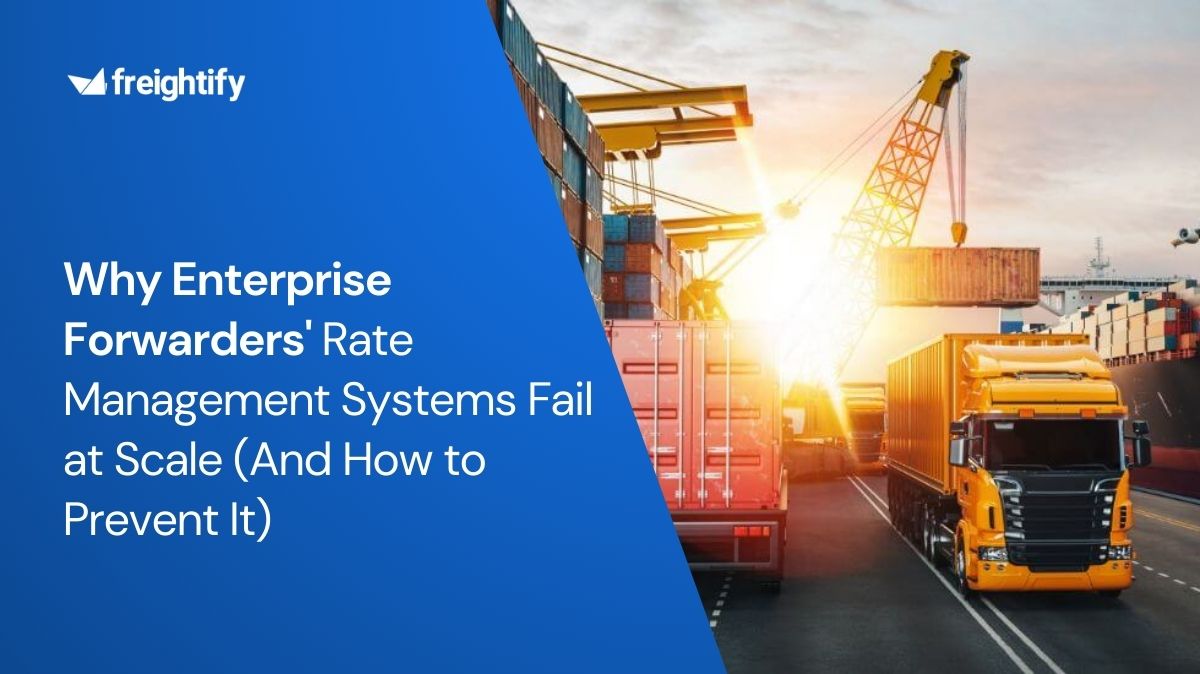Industry trends show that freight volumes and rates are falling currently. What is the current economic condition in the ocean freight industry? As of early September 2022, the expected shipping rate for a 40-foot container from China to the US West Coast is USD 4,900.
Directly comparing this rate to the same period in the previous year, there is a 72% decline in rates .
Prices have now reached a record low post the pandemic; however, they are still three times higher than the rates pre-pandemic. Further, spot rates have been falling for the past 23 weeks, at a stretch.
The ongoing decline in spot freight rates will ultimately move the economic power away from the carriers, who had enjoyed this benefit and had amassed profits for the last two years.
Consumers around the world now look forward to an economy where purchase parity remains more apparent.
Large liners like Maersk have also reported a decline in their volumes during the second quarter of 2022.
The reasons include enhanced container and fleet availability, a decline in demand, and a balanced import-export situation.
Similarly, the latest records show that the transit times from China to US West Coast ports were down drastically to 32 days, from the peak of 50 days recorded in December 2021.
While these data pointers and trends show that the ocean freight market is slowly improving and returning to equilibrium, there are a few factors like shortage of staff, increasing fuel prices, rising inflation, and port congestions that are continuing to complicate this industry.
Let us help you with your journey
Your One Stop Solution to Manage Spot, Contract rates & Margins!
What is forecasted for the ocean freight business for the rest of 2022? Even though freight spot rates have dropped, some liners have still been able to make decent margins due to the long-term contracts that they signed with large corporations earlier last year.
With the dwindling spot rates, the long-term ocean freight rates between China and the US West Coast are now higher than spot prices for the first time since April 2020 .
Over the next 3 to 6 months, consumers are expected to alter their spending habits and reduce their purchases. The initial sparks for this trend began in Q2, with a 5% reduction in purchase frequency and a 6% decline in purchase volumes when compared to the same period last year.
Further, the ships and containers that were ordered for manufacturing before the pandemic will be delivered by late 2022 or early 2023, increasing the supply options.
Bunker fuel prices have been on the rise since the end of 2021.
This adds to the operating costs for liners; however, they are unable to meet the optimum demand that will help absorb these exuberant rates.
Larger liners are forced to move towards energy-efficient solutions like slow-steaming and are implementing the Energy Efficiency Design Index (EEDI) in their new ship acquisitions.
These declines in shipping volumes are expected to continue to decline as the year progresses, a counterreaction to the possible recession outbreak in the developed countries.
How are companies altering their shipping needs with the current market sentiments? While market sentiments play an important role in estimating forecasts, larger external conditions like governmental policies and consumer preferences also play a major role.
There is a rising emotion that companies wish to reduce their manufacturing dependencies in Asia. Over 180 global multinationals have reported that their 2022 profits and forecasts have been hit due to China and their lockdowns.
Further, drastic measures in the form of new US regulations on the import of goods from the Xinjiang region of China have come into effect, impacting import numbers.
Most importantly, the US distribution system has hit its capacity and is overstocked. Business inventories in hand during Q2 were up nearly 18% from a year ago. Large retailing conglomerates like Target, Walmart, Costco, and Amazon have reported a decrease in earnings and are hence aggressively marking down excess merchandise.
The major reasons for a decrease in customer purchase volumes include rising inflation and a general worry that a recession is not far away. Analytics also states that customer purchase habits have returned to the pre-pandemic phases.
Hence, large retailers and wholesalers have reduced their manufacturing operations in Asia and have re-evaluated the quantum that they import into Europe and America.
What is the coping mechanism to counter freight market volatility? Supply chain stakeholders, including freight forwarders, brokers, planners, and analysts, require accurate information from a single source of truth to be able to mitigate the unpredictability of this market.
Enterprise transport management systems or specialized tools, including a rate management system or a rate procurement system along with period management information reporting to help cargo movers make educated decisions that lessen the volatile impact on their businesses.
Furthermore, for freight forwarders and brokers, finding business in a bearish market is rather difficult.
When the general public consensus is to hold off on trading, logistics and supply chain get impacted the most. Identifying and sustaining a continued business is hard during these times. This is where analytics and big data analysis through precise information can prove beneficial.
Freightify’s suite of products can help digital freight forwarders create more business opportunities, retain their customers, and improve their operations, despite the declining ocean freight market trends.
How can Freightify help better the rate management process? The Rate Procurement tool constructed and developed by Freightify offers live and direct API integration to sourcing live spot rates and contracted rates from carriers and NVOCCs across the globe.
This system summarizes multiple freight-related information, including schedules, routes, rates, and currencies, into a single platform that is user-friendly and easy to comprehend.
This automated process does not recquire any manual intervention or time-taking consolidating.
This is of immense importance when spot rates are on a downward spiral as it helps freight forwarders quote correctly and cut their losses short.
Freightify’s rate management program supports a streamlined and automated conversion of all manually driven rate sheets across formats and currencies. With minimal manual intervention and easy maintenance, this system aims to secure and sustain the crux of a freight forwarder’s business.
With the current reduced volumes and demand, it is imperative to provide accurate rates across FCL and LCL modes for customer queries.
Both these tools provide fast turn-around times, heightened transparency, simplified centralized data handling, improved freight visibility, and precise route planning that forwarders can capitalize on.
The rate procurement and management processes through Freightify ensure operational efficiency and financial accuracy during this period.
How can Freightify support the quotation operations? Freightify believes that time is money and speed wins customers. This ideology can be put to practice with Freightify’s digital solutions for freight forwarders’ concerns.
In line with the automation that Freightify has spearheaded for digital forwarders, an integrated and dynamic quotation portal has been developed as an extension of the rate management systems.
In the past, a manual quotation process would result in a customer response rate of about 10%. With the current declines in volume and reduced intention to ship across borders, freight forwarders will have to vie for all possible business.
A 10% success rate cannot help sustain the business in the future. Hence, freight forwarders must move to automized quotation creation processes.
Freightify’s solution for quote creation gives you complete control of your buying and selling prices. This ultimately means that your margins and profits are under your scrutiny.
This program provides accelerated and advanced operational efficiency with zero misquotes and the opportunity to add charges on the fly. Zero misquotes and immediate quotations result in accurate rates during a volatile market.
How does Freightify’s analytics help with problem-solving? It has been established that a single source of truth with transparency and visibility is required for management to make educated decisions and mitigate their risks.
The integration of analytics into Freightify’s systems supports reporting of information in consumable and accessible formats, with systematic action points and a goal to solve problems.
Key KPIs can be tracked: from quote conversion to booking rates, from carrier-wise distribution to geographical trends, from the performance of staff to customer-related metrics.
These bits of information provide insights into which product does the best, which segment is growing, and what customers are looking for. Once such trends have been identified, creating business strategies around this data is easy, targeting the best methods to scale and expand the freight forwarding business.
For example, with the current problem around reduced volumes and increasing inflation, management can utilize data within the organization to arrive at routes and segments that are continuing to gain traction and focus their efforts accordingly.
Freightify’s reports are completely customizable and hence offer more flexibility to the problem solvers. Another interesting insight is the ability to track customers’ searches within the Freightify portals.
This offers freight forwarders the ability to anticipate customer demands and provide appropriate solutions. Our previous blog covered the nuances behind visibility-related techniques that can put freight businesses on the success map.




















